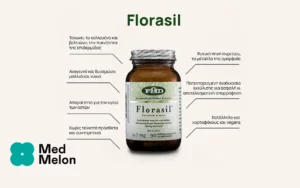Scientific Names of Lemon Peel:
Citrus limon (L.) BURM.f. (syn. C. medica L. subsp. limonum (RISSO) HOOK.F. or var. limonum (RISSO) Wight et ARN.) [Fam. Rutaceae]
Forms:
Aqueous extract of cut and dried lemon peel
Traditional Usage:
– Appetite Stimulant
– Capillary Fragility
– Digestive Disorders
– Flavour Enhancer
– Fragrance Enhancer (aromatic)
– Gastric-juice Deficiency
– Gastrointestinal Disorders
– Phlebitis
– Prevention of abnormal growths (skin, breast, colon, etc.)
– Stomachic
– Vascular Disorders
Overview:
The peel of lemon, Citrus limon (L.) BURM.f. [Fam. Rutaceae], is a leathery exocarp, or skin, containing numerous oil glands. Lemon peel tea, similar to that of orange peel, was traditionally used as a medicine for stimulating the appetite, as well as for treating gastric-juice deficiency and to aid digestion. The British Pharmacopoeia (1988) also lists lemon peel as an aromatic for use as an aroma and flavour enhancer. The (bio-)flavonoids of the drug are reported to reduce the permeability of blood vessels, especially of capillaries, so that extracts from lemon peel are also included in remedies for phlebitis and many vitamin and mineral supplements. New studies on a monoterpene found in lemon peel called limonene show that it very effectively prevents individuals from developing abnormal growths on their skin. Limonene also has demonstrated prevention efficacy in preclinical models of breast and colon abnormal growths. The principal dietary sources of d-limonene are the oils of lemon, orange and grapefruit. A recent case-control study of an Arizona population found that lemon peel consumption was not uncommon, with 34.7% of all subjects reporting citrus peel use and that the related protection against abnormal growths of the skin was quite high and very significant. There was no protective effect shown from eating lemons or other citrus fruit pulps – only the peels. Moreover, there was a dose-response relationship between higher citrus peel in the diet and degree of risk lowering. Other monoterpenes from lemon oil have been shown to have tremendous activity in combating abnormal growths including in rodent mammary, skin, liver, lung and upper stomach. Geraniol has in vivo activity against murine abnormal white blood cells and perillyl alcohol and d-limonene have chemotherapeutic activity against rodent mammary, liver and pancreatic abnormal growths and are under evaluation in Phase I clinical trials with humans.
Active Ingredients:
Lemon peel contains: Between 0.2-0.6% essential oil with limonene as the main component along with citral (a mixture of neral and geraniol), perillyl alcohol and other monoterpenes; many bitter tasting flavonoid including neohesperidosides and rutinosides of hesperetin and naringenin; at least 44 different flavone glycosides; carotenoids; citric acid and many other plant acids; abundant pectins; and coumarin derivatives. There are also many phenols contained in the peel including polymethoxylated flavones and numerous hydroxycinnamates.
Suggested Amount:
Lemon peel can be taken as a tea (although not at all usual on its own) with the recommended dosage of a cold or moderately hot cup of tea taken several times a day half an hour before meals. An infusion is made using 2-3g (1 teaspoonful = ca. 2.5g) of the coarsely cut peel. Boiling water (ca. 150ml) is poured over this and extracted for 10-15 minutes.
Drug Interactions:
None known.
Contraindications:
None known.
Side Effects:
No side effects are known at recommended dosages. However, high dosages of the coumarin derivatives within lemon peel can cause photosensitization in people exposed to high levels of UV, especially in people with fair skin.
References:
Crowell PL. 1999. Prevention and therapy of cancer by dietary monoterpenes. J Nutr. 1999 Mar; 129(3): 775S-778S. Review.
Hakim IA, Harris RB, Ritenbaugh C. 2000. Citrus peel use is associated with reduced risk of squamous cell carcinoma of the skin. Nutr Cancer 2000; 37(2): 161-8.
Hudes GR, Szarka CE, Adams A, Ranganathan S, McCauley RA, Weiner LM, Langer CJ, Litwin S, Yeslow G, Halberr T, Qian M, Gallo JM. 2000. Phase I pharmacokinetic trial of perillyl alcohol (NSC 641066) in patients with refractory solid malignancies. Clin Cancer Res. 2000 Aug; 6 (8): 3071-80.
Manthey JA, Grohmann K. 2001. Phenols in citrus peel byproducts: concentrations of hydroxycinnamates and polymethoxylated flavones in citrus peel molasses. J Agric Food Chem. 2001 Jul; 49(7): 3268-73.
Wichtl M (ed). 1994. Citri pericarpium – Dried Lemon peel (English translation by Norman Grainger Bisset). In Herbal Drugs and Phyto-pharmaceuticals. CRC Press, Stuttgart, pp. 151-152.




